Phonics and Early Reading
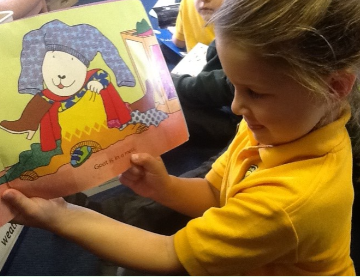
Intent
“Nothing is more important in education than ensuring that every child can read well.”
(DfE, 2015. p7)
Creating a love of reading in children is one of the most powerful ways of impacting on achievement across the curriculum, improving their chances in education, their opportunities in the wider world and contributing to their overall wellbeing. Through reading, pupils have a chance to see the world through the eyes of others and thus develop empathy and their cultural, emotional, intellectual, social and spiritual awareness.
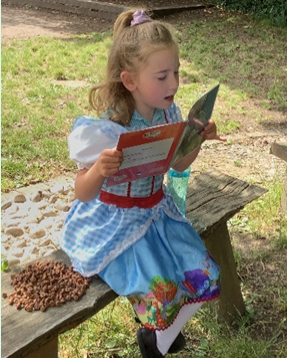
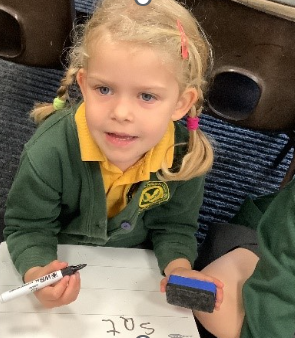
- We want children to enjoy reading so that it is an activity of choice which allows them to follow their interests, acquire knowledge and deepen the enjoyment of other subjects.
- We aim to support children to become confident, independent, enthusiastic and fluent readers, teaching them the various skills necessary, including phonics, in order to read widely and often, accurately, fluently and with good understanding.
- Adults in school aim to create engaging learning opportunities daily based on high-quality texts, share their enthusiasm for reading, model good reading habits as well as reading and listening to children.
We intend to:
- Provide a language-rich environment that stimulates and supports the development of oracy and literacy skills, the foundations of learning across the curriculum.
- Ensure consistent teaching, carefully-constructed progression and continuity in the teaching, learning and assessment of phonics throughout the school.
- Follow the ‘Unlocking Letters and Sounds’ (ULS) systematic, synthetic phonics programme (accredited and validated by the DfE in 2021), with fidelity - from the first weeks in our Reception class - teaching daily 20-minute lessons to the EYFS, Year 1 and, in the Autumn term, to pupils in Year 2.
- Enable pupils to
- Read, say and write all of the graphemes within phases 2-5 of ULS.
- Use their phonic knowledge to blend (read) and segment (write) simple and more complex, phonically-decodable words, including alternative pronunciations of graphemes.
- Recognise ‘on sight’ the common exception words (CEW).
- Read with fluency and accuracy for meaning and pleasure.
Implementation
“To witness pupils beginning to grasp the joy of independent reading and writing
is one of -the most thrilling developments of childhood.”
(EEF, 2020. p2)
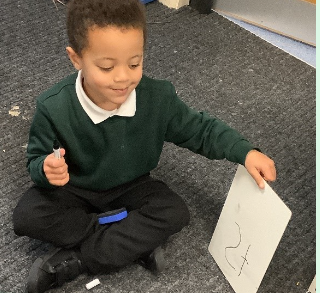
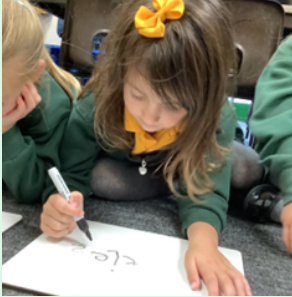
For reading to be a pleasurable activity, children need to be able to read texts with automaticity and fluency. At St. John’s we aim to equip all pupils with the skills to blend sounds to read words – and segment sounds to write words - through high-quality, fast-paced daily phonics lessons from the first weeks in our Reception class. (See the ‘Phase 2 actions, sounds and handwriting patterns’.)
We follow the ‘Unlocking Letters and Sounds’ (ULS) programme and progression. ULS is a systematic and synthetic phonics programme integrating visual and kinaesthetic resources. We show fidelity to this programme and it is used throughout the school to quickly develop pupils’ phonemic awareness, word recognition and spelling by teaching the relationship between phonemes and graphemes. Children also learn common exception words and specific and relevant vocabulary related to phonics. All our phonics resources, including books, are closely aligned to the programme and this enables children to make rapid progress.
Phase 1 places an emphasis on speech and language development, for example oral blending and segmenting. It seeks to consolidate and develop listening skills, sound identification, awareness of rhythm and rhyme. This is taught throughout the EYFS - and in Year 1 for those children requiring additional practise.
Phases 2-5 In the EYFS and Key Stage 1, this comprises daily, discrete, 15-20 minute phonics lessons and tailored, 1-1 interventions for those children needing additional support, particularly those who did not pass the Phonics Screening Check (PSC) in Year 1.
Similarly, in Key Stage 2, these bespoke 1-1 interventions continue in order to support those children who did not pass the PSC in Year 2 or need further phonics provision.
Phonics lessons are taught discretely. They are well planned and follow a clear teaching sequence. (See the ULS Progression document.) Consistent phonic terminology (for example: grapheme, phoneme, digraph, trigraph) is taught explicitly and referred to by staff and pupils. ‘Sound buttons’ are used to identify the phonemes/graphemes within words to aid reading and ‘phoneme fingers’ are used to aid spelling.
Lessons follow the structure of:
Revisit – recap phonemes/graphemes and words previously taught.
Teach – teach a new phoneme/grapheme or common exception word (CEW).
Practise – opportunity to practise grapheme:phoneme correspondences and CEW.
Apply – use new learning to read and write words, captions and sentences.
Revise – recap and address misconceptions as they arise.
In Reception, children are taught:
- the main sounds (phonemes) in the English language and the letters and combinations of letters (graphemes) that can be used to represent them,
- some ‘common exception words’ (i.e. words which cannot be soundtalked) from Phases 2, 3 and 4,
- to use the grapheme:phoneme correspondences they know to read and write simple words, captions and sentences, using ‘patters’ to support their letter formation. (See the ULS-Actions, Images & Handwriting Patters document.)
In Year One, children continue to develop their phonic knowledge through ‘ULS’ in Phases 5a, b and c. They are taught:
- alternative pronunciations and spellings of sounds,
- further ‘common exception words’.
Children are regularly assessed throughout, so that those not meeting age-related expectations - or in danger of falling behind – can be supported through bespoke interventions. The lowest attaining 20% of pupils are closely monitored to ensure that the interventions are impactful. Interventions include blending and segmenting activities and practising grapheme:phoneme correspondences (GPCs).
All children are screened in Year 1, using the statutory National Phonics Screening Check, by which time they have become largely skilled at using phonics to blend for reading and segment for writing.
In Year Two, phonics is revisited in order to secure mastery in applying the phonetic code.
Once again, to ensure that no child is left behind at any point in the progression, children are regularly assessed and supported through bespoke interventions.
In Key Stage Two, children continue to use ‘Unlocking Letters and Sounds’ as a tool to support spelling where needed.
Early reading
We promote a ‘phonics first’ approach to reading at St. John’s. Children in the process of acquiring phonics have a group reading lesson every week. Staff plan, teach and assess children’s reading using the ‘ULS’ resources. Books used for reading lessons at school and taken home by children to practise reading are entirely decodable and closely aligned to a child’s current phonic knowledge, enabling every child to experience success and satisfaction in their reading.
In these crucial early stages of reading, we primarily use books from Ransom Reading Stars Phonics to ensure complete fidelity to the ‘ULS’ phonics programme. We also use other similarly decodable books which closely match the programme (for example ‘Collins Big Cat’).
Once children progress beyond decodable texts, they select age and stage-appropriate books so that they can continue improving their decoding, fluency and comprehension skills to become avid, expert readers.
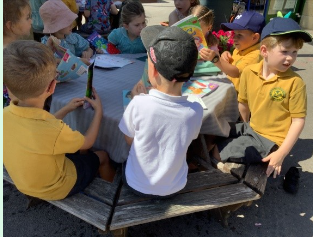
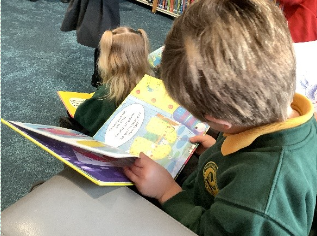
Assessment
We closely monitor children’s progress in securing and applying their phonic knowledge through Assessment for Learning in the classroom, termly formative assessment and summative assessment at several points in the academic year. We maintain an electronic phonics tracker to inform teacher planning.
Documentation
Impact
“Literacy is essential. Without literacy, it’s hard to live the life you want. From your earliest years, literacy skills help you develop and communicate.”
(The National Literacy Trust.)
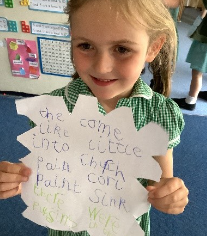
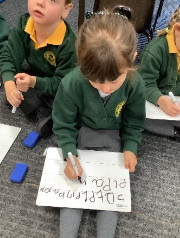
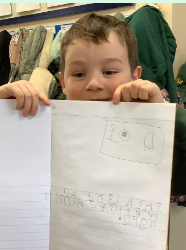
All children make rapid progress and receive bespoke interventions if required. On leaving Reception, most children can apply the Phase 2, 3 and 4 phonemes to their reading and writing. They can read and write simple sentences and talk about what they have read.
At the end of Year 1, most children can accurately apply their learning from Phase 5 to their reading and their writing.
In 2025, our results in the Phonics Screening Check revealed that 77% passed in Year 1. Of those children who resat, 60% passed.
Children enjoy reading and are excited by book-related activities.
Pupil Voice
“The teachers read with me at school so now I can read books at home. I like ‘Titanic’ books.”
(Year 2 pupil)
“We learn our sounds and then we learn to read. When I go to bed and I can’t sleep, I get a book to read. I’ve got books ready for Monday and Tuesday and Wednesday...one for every day!”
(Year 1 pupils)

 St
John the Evangelist Church School
St
John the Evangelist Church School 


